Communication is a vital aspect of our daily lives, allowing us to express our thoughts and emotions and connect with others. While words play a significant role in communication, reading body language also conveys much information. Our tone of voice, facial expressions, and even walking can reveal our underlying emotions.
In this article, we will explore some intriguing facts about body language that can provide insights into a person’s thoughts and feelings.
Which Body Language Signs Can Help You Read Anyone Like a Book?
Men tend to touch their faces, while women often touch their necks, clothing, or hair when uncomfortable.

When experiencing discomfort, women commonly touch their necks, which contain numerous nerve endings that can help decrease heart rate. This action is an unconscious way for the body to self-soothe and find comfort. In contrast, men often touch their faces as a means of soothing and protecting themselves when feeling uncomfortable.
Some scientists propose that handshakes originated as a way to exchange body odors.

The act of shaking hands may have deeper roots than mere politeness. Some scientists believe that it evolved as a way to familiarize ourselves with someone else’s odor. In a way, it is reminiscent of dogs sniffing each other when they meet.
Research indicates that people tend to subconsciously sniff their hands after shaking hands with others. However, they may not be aware of it.
Kissing in public is considered taboo in many Asian cultures.
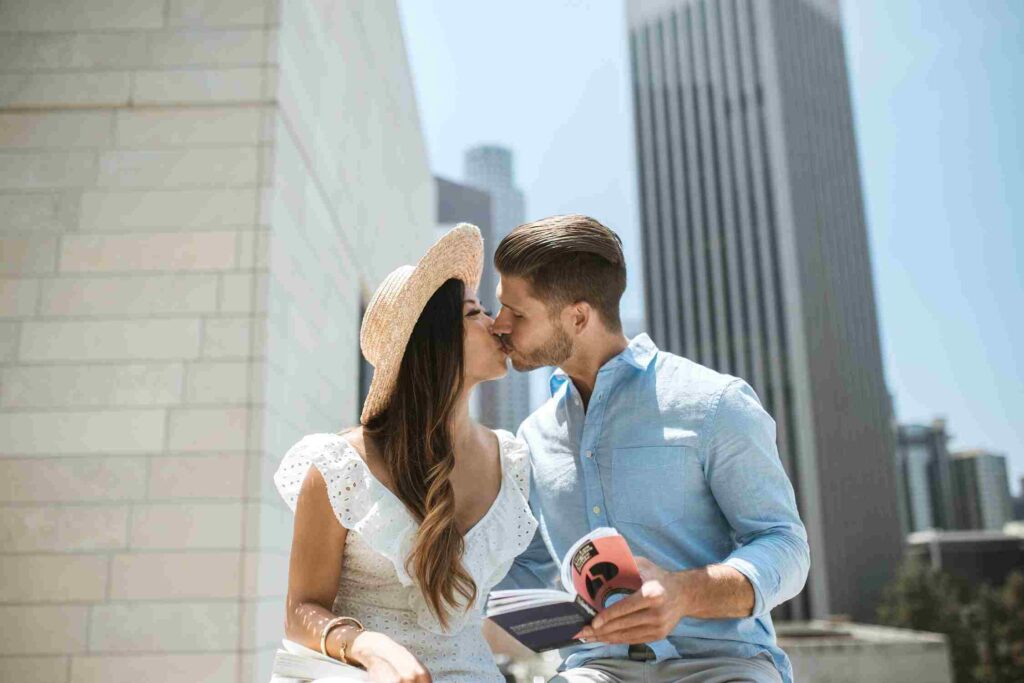
Contrary to the universal acceptance of kissing, public displays of affection (PDA) are not the norm in Asia and are often disapproved of. In these cultures, it is more common to see same-sex friends holding hands rather than couples engaging in public displays of intimacy.
If one partner rests their legs on the other while sitting on the couch, it signifies dominance.

Surprisingly, the way we sit on a couch can reveal insights about our relationships. When one partner rests their legs on the other, it typically indicates that they hold the dominant position. This dominance is not limited to the couch but extends to the overall dynamics of the relationship. However, this position usually signifies a happy and comfortable relationship between the partners.
Personal space varies across cultures, with Americans standing 18-48 inches apart and Japanese preferring a smaller distance of about 10 inches.

Each person has their own concept of personal space, which can vary across cultures. The size of personal space is partly influenced by cultural factors and the population density in which individuals grew up. Americans typically maintain a larger distance between themselves and others, while Japanese prefer a smaller personal space. Additionally, individuals from rural areas often have larger personal bubbles compared to those living in urban areas.
Women often laugh at men they find attractive, and men are attracted to women who laugh at their jokes.

When a man praises a woman for having a good sense of humor, he is not necessarily referring to her joke-making abilities. Instead, he means that she appreciates his jokes and laughs at them. Furthermore, the more a man can make a woman laugh, the greater the likelihood of developing a long-term romantic relationship. Humorous banter during flirty interactions is a positive sign, indicating openness and a desire to continue the conversation.
Cultural differences influence physical contact in social interactions, with Latin America being a high-contact culture and most of Northern Europe being a non-contact culture.

High-contact cultures involve more frequent physical touch, less personal space, increased eye contact, and louder conversations. These characteristics are often observed in Latin American and Middle Eastern cultures. In contrast, non-contact cultures tend to maintain more distance between individuals and engage in less physical touch. When people from different cultures interact, someone from a non-contact culture might appear unapproachable to someone from a high-contact culture, while the latter may be perceived as pushy.
Female Body Language:

Reading a woman’s body language can be complex. Still, there are certain indicators that can suggest her interest or lack thereof. When a woman is attracted to someone, she may subtly accentuate her curves by sticking out her chest. Additionally, she might lean into the person, roll her shoulders back, and adopt a taller stance. On the contrary, if a woman is uninterested, she may display defensive body language by crossing her arms.
If someone steps back while you’re talking to them, it may indicate discomfort or disinterest.

Imagine having a conversation with someone who starts stepping back. This gesture usually signifies that the listener is uncomfortable or no longer interested in the conversation topic. It suggests a desire to create distance between themselves and the source of discomfort, which can be disheartening for the person speaking.
Facial expressions can reveal true emotions, even if someone tries to conceal them.

Facial expressions offer significant insights into an individual’s inner emotions. Various emotions, such as happiness, sadness, anger, surprise, disgust, and fear, can be conveyed through facial expressions. For instance, slight downturned corners of the lips indicate sadness, while narrowed lips and a glaring expression indicate anger.
The Duchenne smile is the most genuine expression of happiness among the various smiles.

Smiling is a powerful facial expression that can improve mood and calm a racing heart. Interestingly, there are numerous types of smiles, but the Duchenne smile is the most genuine. It involves the eyes crinkling at the corners and reflects true happiness. Only a few smiles occur when people are genuinely enjoying themselves.
The blinking rate increases significantly when a person is under pressure or stress.
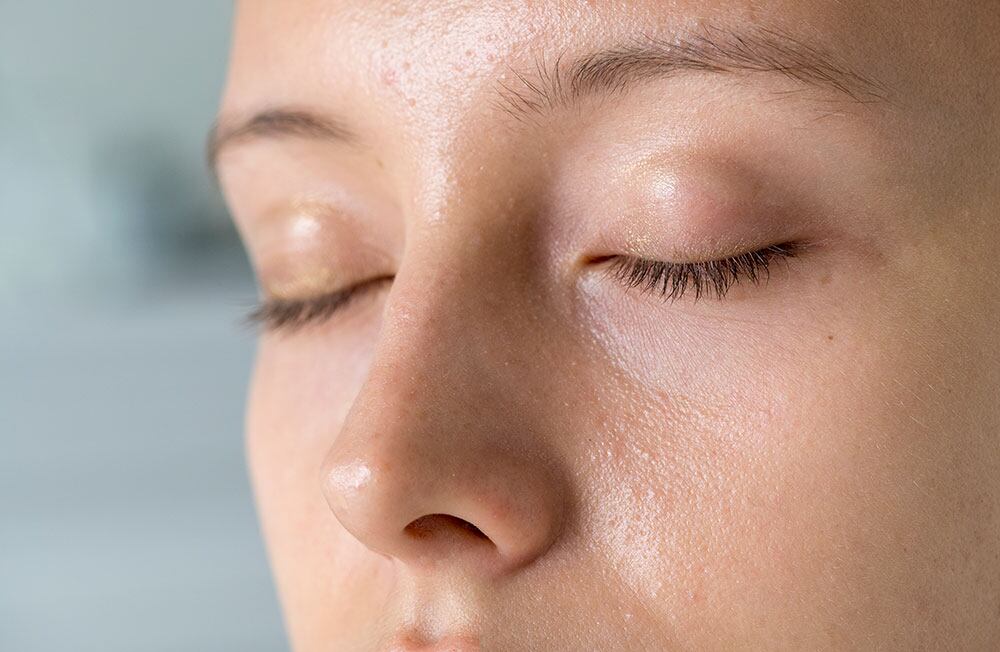
When individuals experience stress, their blink rate tends to increase. Rapid eye blinking can indicate lying, nervousness, or anxiety. Conversely, excitement can also cause rapid blinking, as the mind subconsciously reminds itself to blink and stay alert while focusing on the source of excitement.
Prolonged eye contact and certain behaviors can indicate deception.

Deceptive behavior is a common human trait, and eye contact can be a revealing factor. Liars tend to either stare excessively or look away at crucial moments. Additionally, shifting eye movements while formulating a response can be indicative of dishonesty. Research suggests that individuals who lie are more likely to maintain prolonged eye contact with others than truthful people.
Children laugh significantly more than adults, with toddlers laughing around 400 times daily on average, while adults laugh approximately 15 times daily.

Children’s laughter far surpasses that of adults. Babies start laughing around 10 weeks of age, and by the time they reach 4 years old, they typically laugh about 15 times per hour. Research has shown that a hearty belly laugh of 20 seconds can have physical benefits comparable to three minutes of rowing exercise. Social interactions tend to elicit more laughter than solitary moments.
Imagining someone as an old friend when meeting them can subconsciously relax your body and face.

Meeting new people can be intimidating, but a simple trick can help relax your body language. Your body will unconsciously respond by imagining the person you are meeting as an old friend. For example, your eyebrows may soften, and your toes may be more open. Furthermore, acting friendly towards someone can lead to genuine liking.
Avoid holding objects, like a coffee cup, close to your chest while speaking to someone.

It’s crucial to avoid creating physical barriers between yourself and the person you are conversing with. This applies not only to holding coffee cups but also to any objects that may obstruct open communication. To project security and openness, hold objects at waist level rather than deliberately using them to block yourself or create distance.
An eyebrow flash, quickly raising both eyebrows, can be a subconscious signal of flirting.

A mismatch between verbal statements and corresponding nonverbal cues can reveal deception. For instance, when someone says “no” but simultaneously nods their head “yes” or vice versa, it can serve as a clear indicator of deceit. Paying attention to both words and body language can unveil inconsistencies and potential falsehoods during conversations.
Raising our shoulders when feeling threatened.
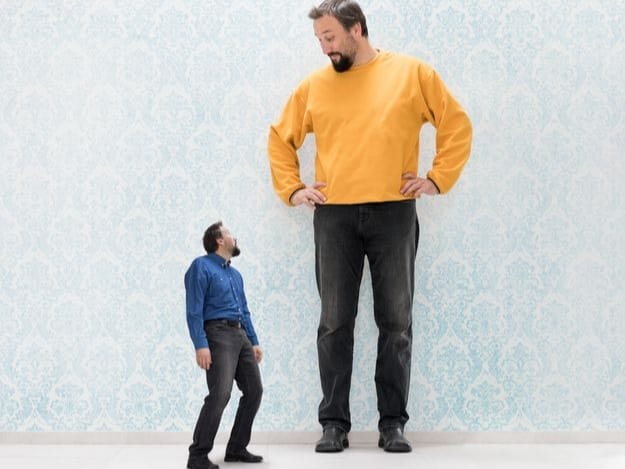
Although we can’t retract our limbs like turtles, humans tend to raise their shoulders when they feel threatened. This behavior, known as the Turtle Effect, is an automatic response to make ourselves appear smaller and blend into our surroundings. People who shoplift may also exhibit this behavior to make themselves less noticeable.
Using hand gestures can help alleviate nervousness.

Hand gestures not only help calm nervousness but also enhance cognitive processing. When we speak, the part of our brain responsible for speech production is active, and the same region is stimulated when we use hand gestures. Incorporating hand movements while speaking can reduce anxiety and nervous tension, particularly during public speaking engagements.
Crossing your arms is not always a defensive gesture; it can also be a way to soothe yourself.

Many people assume that crossing your arms indicates a closed-off or defensive attitude. However, the truth is that there are numerous ways to cross your arms, each with its own meaning. Sometimes, when someone feels overwhelmed or anxious, they may cross their arms as a self-soothing mechanism to calm themselves down. On the other hand, if someone crosses their arms tightly while gripping both arms, it could be a sign of stress or tension.
Hair-touching by women can be a sign of interest.

Believe it or not, there is a hidden message behind playing with hair, especially when it comes to women. Oftentimes, women touch or twirl their hair when they are trying to flirt or show interest in the person they are talking to. This action draws attention to the hair, as our eyes are naturally attracted to movement. This behavior, known as preening, is a way for women to enhance their attractiveness, and when they are around someone they like, they may engage in more preening behaviors.
Blind children often cover their eyes when hearing bad news.
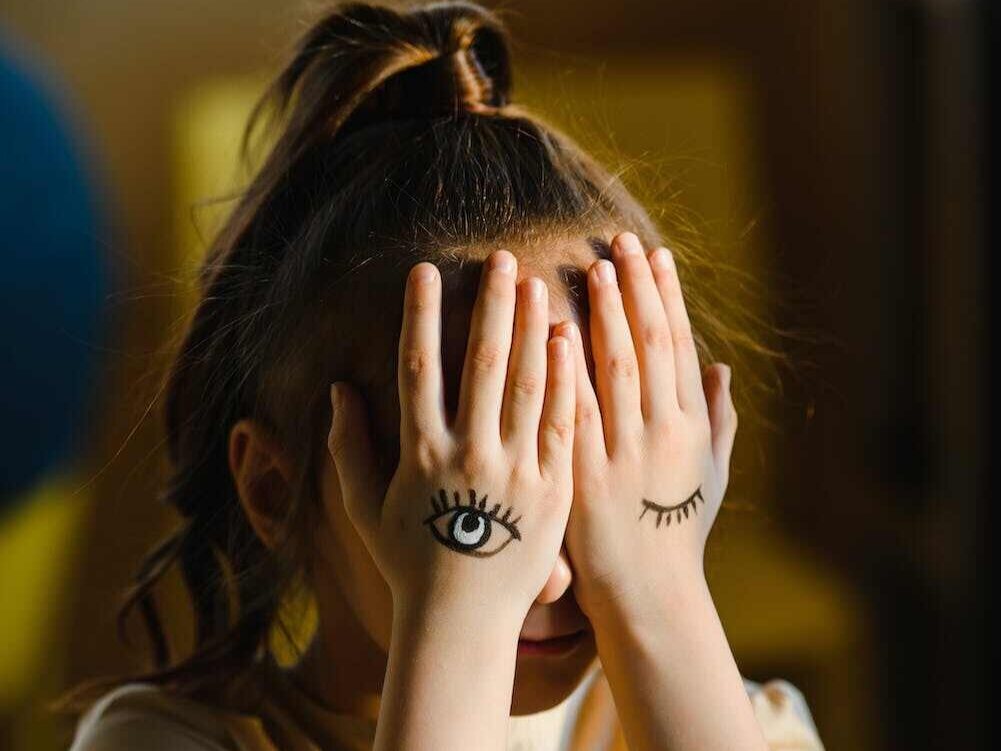
Blind children develop unique ways of reacting to situations and adapting to life without sight. Interestingly, when blind children receive bad news, they tend to cover their eyes, similar to how sighted individuals may cover their ears to block out stress or panic.
Good posture exudes confidence and leadership.

Standing tall and maintaining good posture benefits your physical health and projects a sense of self-assurance. To achieve good posture, start by raising your shoulders towards your ears, rolling them back, and then lowering them. Body language plays a significant role in conveying power and authority. Having an upright posture allows you to occupy more space and claim your presence. Additionally, using open hand gestures instead of crossing your arms can further enhance your confidence.
Tilting your head can make you appear more attractive.

Women often tilt their heads When they want to show interest in someone. This gesture is non-threatening and submissive, which many men find attractive. It also indicates agreement with the person they are speaking to. Tilted heads are also seen in animals as a sign of playfulness and fun. Furthermore, the angle created by the head tilt can flatter facial features.
Our eyes reveal our thoughts.

Our eyes provide valuable insights into our thoughts and feelings. Like reading our body language, eye movements can convey a wealth of information. For instance, looking up and to the right suggests visual recall, while looking down and to the right might indicate internal dialogue. By paying attention to someone’s eyes, we can better understand what is happening in their mind.
Keeping your hands visible can enhance trustworthiness.

It’s common to feel uncertain about what to do with your hands in public settings. Our hands makes easy for reading a body language as individuals who tend to be nervous often find themselves putting their hands in their pockets or crossing their arms. However, these actions can make one appear closed off. Instead, keeping your hands visible, open, and relaxed fosters an impression of openness and trustworthiness.
The origins of human laughter can be traced back to early warning signals and their close association with crying.

Laughter serves as a means of communication to signal that a potentially dangerous situation should not be perceived as threatening. By laughing, individuals convey that everything is alright. Additionally, laughter facilitates social bonding. It is believed that laughter, smiling, and crying may have evolved from a common defense mechanism.
The furrowing of the glabella (the area between the eyebrows) may indicate disagreement.

Here’s an interesting fact about human behavior. From infancy, we are instinctively wired to look at the glabella to gauge the emotional state of others. If we furrow our glabella and squint our eyes while looking at a baby, the baby will typically respond negatively. Similarly, when we see someone with a furrowed glabella, it conveys seriousness or disagreement. Additionally, if someone rubs or touches this area of their face, it could be a sign of experiencing stress.
Covering the stomach can indicate discomfort.

In a particular photo, by reading the body language of Meghan and William, we can observe a strong mutual fondness as they embrace each other’s arms and share a cheek kiss. However, Harry’s gesture of holding his abdomen with his hand indicates a sense of discomfort or unease. It seems he is trying to make himself feel more secure in that moment.
The way you hold your purse reveals something about your priorities.

Who would have thought how we carry our handbags could reveal insights into our personalities? We often choose the perfect bag to carry our belongings, but we rarely consider how we carry it. Carrying a purse in the crook of the elbow can signify a focus on status and position. It can also be a way of showcasing the bag itself as a status symbol.
Mirroring the body language of someone else can indicate affection or connection.

Imitation is often seen as a form of flattery and applies while reading body language. We tend to unconsciously mirror their body language when we feel a connection or attraction to someone. This phenomenon, known as mirroring or limbic synchrony, is a way to express empathy and connection without using words. From an evolutionary perspective, being in sync with others was crucial for survival, and now we continue to mirror others to show our emotional bond.
Sucking in your lips can create the perception that you are concealing something.

Our lips can reveal a great deal about our inner state. When feeling nervous, we often unconsciously suck in our lips. However, this action can give the impression that we are hiding something from others.
Insecure individuals often display closed-off body language, such as making themselves appear small.
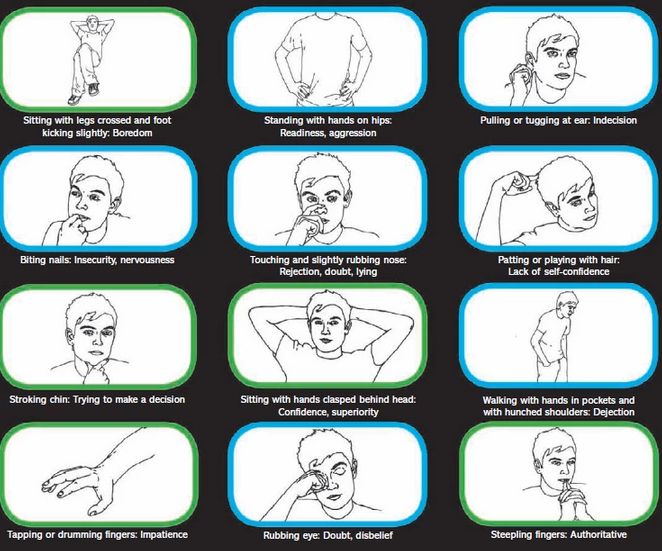
Reading some specific body language cues helps to observe insecurities. People feeling insecure may exhibit behaviors such as pulling on their ears, rubbing their eyes, biting their nails, or walking with hunched shoulders. On the other hand, individuals who feel secure may sit with their legs crossed, place their hands behind their heads, or use a steepling hand gesture.
Simultaneously nodding while denying strongly indicates guilt.

It means that when someone nods their head affirmatively while verbally turning down something, it can show guilt or lying. Reading such body language suggests that their behavior says the opposite of their words, leading to unbelief or doubt concerning their honesty or integrity.
Adopting a power pose for a couple of minutes can boost confidence and reduce stress levels.

Taking just two minutes to stand in a power pose can have a positive impact. By assuming a high-power pose, such as standing with your feet apart or placing your hands on your hips, your body increases testosterone levels and decreases cortisol levels. One popular power pose is known as the “Wonder Woman” pose. Engaging in this posture before a presentation or an interview can enhance confidence.










